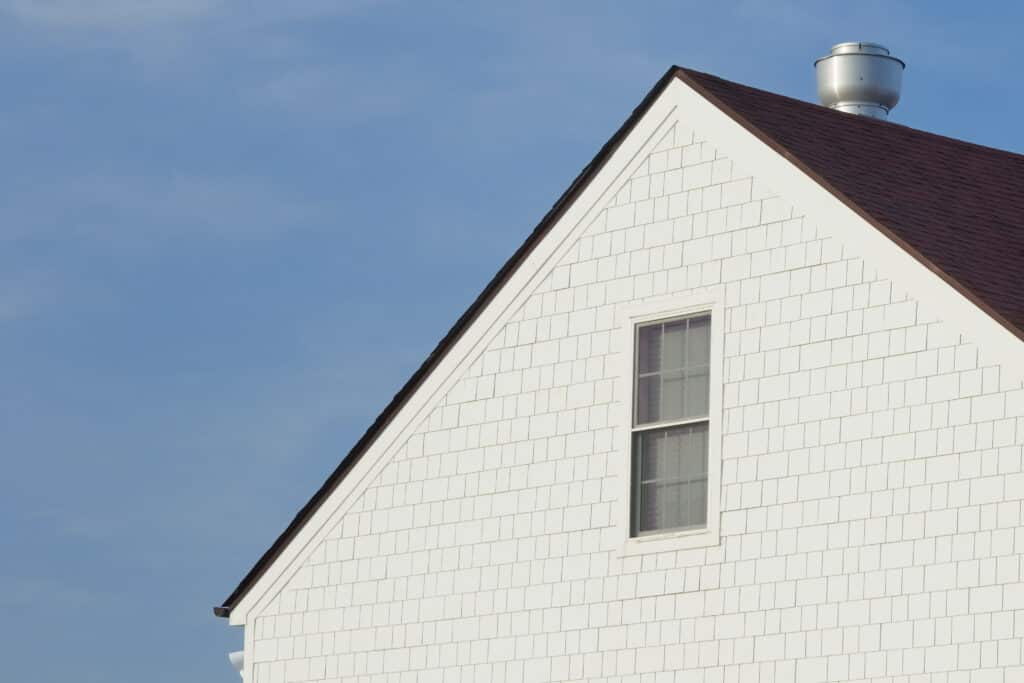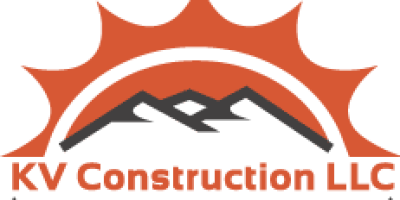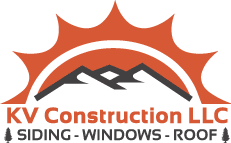Key Highlights
- Fiber cement is a durable and weather-resistant option for homeowners.
- The average cost is between $5 and $14 per square foot, with an average cost of $14,674.
- Cost factors include the type, labor costs, and square footage.
- There are main types of fiber cement: planks, shingles, and panels, with varying costs for each type.
- Labor costs for installing fiber cement range from $2 to $8 per square foot.
- Other cost factors to consider include the removal of existing siding, necessary repairs, and finishing costs.
Introduction

Fiber cement has gained popularity among homeowners for its durability, weather resistance, and aesthetic appeal. This type is known for its ability to withstand fire, moisture, and pests, as well as high winds, making it a long-lasting and low-maintenance option for homes. In addition, it is available in a variety of styles, textures, and colors, allowing homeowners to achieve the desired look for their homes.
However, one common question that homeowners have when considering it, is its cost. Is fiber cement siding expensive? In this blog, we will explore the pricing insights in 2025 to help homeowners make informed decisions. We will discuss the key highlights, factors affecting costs, types available, cost breakdown, and compare it with other options. Additionally, we will provide tips on how to maximize your investment in fiber cement and answer some frequently asked questions.
Whether you are planning to replace your existing siding or are in the process of building a new home, understanding the costs associated with it will help you budget and make the right choice for your home.
Understanding Fiber Cement Siding Costs in Seattle
When considering the cost, it is essential to consider the specific location where you live. In Seattle, for example, the average cost of fiber cement siding is influenced by factors such as the cost of living, labor costs, and material availability.
The square footage of your home is another crucial factor in determining the cost. Larger homes will require more materials, which will increase the overall cost. Is fiber cement siding expensive? It is recommended to get an accurate estimate from a professional to determine the cost in Seattle based on the specific details of your home.
The Basics of Fiber Cement Siding Pricing

Common question we see homeowners ask Is fiber cement siding expensive? The average cost is between $5 and $14 per square foot. This cost includes both materials and labor, with the cost of labor being a significant factor in the final price. However, it is important to note that the actual cost can vary based on several factors, such as the type chosen, the size of the project, and the location. Understanding the basics of fiber cement siding pricing, including the cost of labor, is essential for making informed decisions about home renovations. Homeowners can also compare these costs against other siding materials, such as vinyl, stone, and wood, to determine the best option for their budget and needs.
The square footage of your home will directly impact the cost. The larger the home, the more materials and labor will be required, resulting in a higher cost. Multi-storied homes with dormers, gables, and other highly angular areas will also require specialized measurements, cuts, and installation costs. It is recommended to consult with a professional like KV construction LLC to get an accurate estimate based on the specific details of your project.
While it may have a higher upfront cost compared to other options, its efficiency and longevity can make it a cost-effective choice in the long run. By investing in quality product homeowners can enjoy a durable and low-maintenance exterior that can withstand the elements for many years to come.
Factors Affecting Costs in Seattle, WA

Is fiber cement siding expensive? Several factors can affect the cost in Seattle WA. Firstly, the cost of living in the area can impact the overall cost of materials and labor. Higher living costs typically translate to higher prices for construction materials and services.
Labor costs can also vary based on the demand for skilled workers in the area. If the demand is high, labor costs may be higher as well. Additionally, the size and complexity of the project can influence the cost. A larger or more intricate project may require more labor and materials, resulting in a higher cost.
Finally, the specific type, color, and brand chosen can also impact the cost. Higher-end brands may have a higher upfront cost but may offer better energy-efficiency and longevity. It is important to consider all of these factors when budgeting for fiber cement siding in Seattle, WA.
Cost Breakdown
Material costs constitute a significant portion of the overall expenses when opting for fiber cement. The price varies depending on the quality and brand of the panels chosen for the project. Labor costs are another key element to consider, as the installation process requires skilled professionals to ensure a proper and durable finish. It’s crucial to factor in both material and labor costs when estimating the total expenditure for your fiber cement project. Selecting a reputable brand like James Hardie may result in a higher initial investment but often pays off with superior insulation and aesthetic appeal. When considering the cost breakdown of fiber cement, it’s important to factor in both material and labor expenses for an accurate estimate of project costs.
Material Costs Explained
When budgeting understanding the breakdown of material costs is crucial. Fiber cement panels, planks, or shingles come with different price points. Typically, material costs range from $1 to $5 per square foot, excluding installation. Higher-grade materials like James Hardie may be at the upper end of the spectrum due to their insulation and warranties. It’s essential to choose quality materials to ensure energy efficiency and minimize future maintenance expenses. Investing in premium fiber cement can offer long-term benefits in terms of both aesthetics and efficiency.
Labor Costs in Detail
Labor costs for installation encompass various factors. Is fiber cement siding expensive? Professional installation ensures expertise but warrants higher fees. Factors influencing labor expenses include project size, intricacy, and location. Seattle’s labor rates can vary due to market dynamics, experience level, and demand. Skilled labor is crucial for meticulous installation to prevent future issues like moisture damage. Proper safety measures and efficient workmanship contribute to overall cost-effectiveness. Ensuring reliable labor and adhering to project timelines are essential for a successful installation process. Professional labor guarantees quality workmanship and lasting appeal for your investment.
Types Available

This type of material offers various options to suit different aesthetic and functional preferences. Common types include panels, shingles, planks, and boards. Fiber cement panels provide a sleek, modern look, while shingles mimic the appearance of traditional wood. Planks offer a versatile design similar to cedar, and boards deliver a contemporary appeal. Batten panels, which can be used to line the siding behind fiber cement panels, offer a unique and durable design option. Each type has its unique characteristics, such as water resistance, moisture resistance, and diverse styling options. New fiber cement siding can also convincingly imitate the look of natural fieldstone, stacked flagstone, or brick at a fraction of the cost. Understanding the distinctions between these options can help homeowners make informed decisions when selecting the most suitable product for their property.
Pros and Cons of Each Type

When considering the pros and cons of different types, it’s essential to weigh the advantages and disadvantages. Traditional panels offer excellent longevity but may require more maintenance. Fiber cement shingles mimic the look of real wood without the high maintenance associated with wood and especially if you question whether Is fiber cement siding expensive? Fiber cement planks provide a modern aesthetic similar to cedar but with lower maintenance needs. Each type offers unique benefits, such as moisture resistance, pest resistance, and customizable finishes. However, cost and installation complexity can vary, so it’s crucial to choose the option that best suits your preferences and budget.
Price Comparison by Type

Is fiber cement siding expensive? When considering fiber cement, it’s crucial to compare the costs associated with each type available in the market. Different variations like panels, shingles, planks, and boards come with unique price points, depending on the selected siding style. Typically, fiber cement planks may cost more due to their longevity and appearance similar to real wood. On the other hand, fiber cement shingles might be more budget-friendly while still offering excellent protection against moisture and rot. Understanding the price differences among these types, as well as their specific features such as appeal and cladding capabilities, can help homeowners make an informed decision based on their preferences and budget constraints. Choose wisely to maximize the value of your investment.
Additional Expenses to Consider

When investing in fiber cement, additional expenses must be factored in for a comprehensive cost assessment. Beyond the material and labor costs, preparing for the installation by removing old siding is crucial. Any necessary repairs to the structure should be addressed before the new siding is installed to avoid complications. Is fiber cement siding expensive? Finishing costs including painting and sealing are essential to enhance both the aesthetic appeal and longevity. By accounting for these extra expenses, homeowners in Seattle can ensure a smooth and successful project.
Preparation and Removal of Old Siding
Before installing, adequate preparation and removal of old siding are crucial steps. Ensuring the surface is clean and in good condition will enhance the strudiness of the new installation. The removal process might involve additional costs, especially if there are underlying issues like moisture damage or dry rot that need to be addressed before proceeding with the new siding. Proper preparation not only sets the foundation for a successful installation but also prevents future complications, making it a worthwhile investment for any homeowner looking to upgrade their exterior.
Necessary Repairs Before Installation
Before installing, it is crucial to address any necessary repairs to ensure a smooth and durable installation process. Repairing any existing moisture damage, dry rot, or other issues on the exterior walls is essential before proceeding with the new siding. This step not only enhances the aesthetics of your home but also prevents potential future damage, ensuring the longevity of your investment. By taking care of these repairs beforehand, you create a sturdy foundation for the new fiber cement, promoting a seamless and high-quality finish that will stand the test of time.
Finishing Costs: Painting and Sealing
If you question whether is fiber cement siding expensive? Then there are a few factors to consider when you make a decision. When considering fiber cement, it’s essential to account for finishing costs like painting and sealing. These final touches not only enhance the appearance of your exterior but also provide crucial protection against moisture and other elements. Quality paint and sealant contribute to the efficiency ensuring it remains in good condition for years to come. While these finishing costs may add to the initial investment, they are a worthwhile expense in preserving the longevity. Proper painting and sealing can prevent issues like moisture damage and help maintain the aesthetic appeal of your home.
Maximizing Your Investment

Long-Term Savings vs. Initial Costs
When considering fiber cement siding, it’s essential to weigh the initial costs against long-term savings. While the upfront investment may seem higher compared to other siding options, the durability and low maintenance can result in significant savings over time. With minimal upkeep and longevity, you’re likely to avoid frequent repairs and replacements, leading to cost-effectiveness in the long run. Is fiber cement siding expensive? Investing in quality fiber cement siding upfront can translate into peace of mind and financial benefits down the road. Prioritizing durability and quality can pay off in terms of both savings and overall satisfaction with your investment.
Maintenance Tips to Extend Lifespan
To extend the lifespan of your fiber cement siding, regular maintenance is crucial. Inspect the siding annually for any signs of damage, such as cracks or moisture infiltration. Clean the siding with a mild detergent and soft brush to prevent mold and mildew growth. Pay special attention to painted surfaces and perform touch-ups when needed to maintain the aesthetic appeal. Avoid using high-pressure washers as they can damage the siding. Lastly, taking advantage of siding warranties is a great way to ensure proper sealing and caulking around windows, doors, and seams, preventing water penetration and prolonging the durability of your siding.
Comparing Costs: Fiber Cement vs. Other Options

Is fiber cement siding expensive? When assessing the cost of siding options, comparing to alternatives like vinyl or wood is crucial for informed decision-making. While fiber cement may have higher upfront costs due to its durability and low maintenance, it often proves cost-effective in the long run. Vinyl siding, although cheaper initially, might incur higher maintenance expenses over time. Wood siding, while offering a natural aesthetic, can require significant upkeep and may be more susceptible to moisture damage. By considering factors like siding type, longevity, maintenance requirements, and overall value, homeowners can determine the most cost-effective choice for their property.
Vinyl Siding vs. Fiber Cement
While vinyl siding is more affordable upfront, fiber cement siding offers better durability and a more upscale appearance. It mimics the look of real wood with lower maintenance requirements. It is resistant to moisture, rot, and pests, making it a long-lasting investment. On the other hand, vinyl siding may be prone to cracking, fading, and damage from extreme weather conditions. It generally costs more initially but proves cost-effective in the long run due to its durability and minimal maintenance needs, making it a preferred choice for many homeowners seeking a balance between cost and quality.
Wood Siding vs. Fiber Cement
When deciding between wood and fiber cement, it’s essential to consider durability and maintenance. Wood siding offers a traditional look but requires regular upkeep due to rot and pests, impacting long-term costs. Fiber cement siding, on the other hand, is highly efficient, with lower maintenance needs and higher resistance to moisture and pests. While wood siding may need more frequent maintenance to keep its appeal, fiber cement board provides a balance of aesthetics and longevity, making it a reliable choice for homeowners seeking a waterproof and low-maintenance exterior solution.
Professional Installation vs. DIY: Cost Implications

Is fiber cement siding expensive? Professional installation often comes with a higher initial cost due to labor expenses but ensures expertise in the installation process, potentially saving on future repairs. DIY projects may seem cost-effective, but without proper skills, mistakes can lead to additional expenses. Professionals guarantee efficient installation, minimizing the risk of moisture damage and ensuring durability. However, homeowners should also consider the cost implications of hiring a professional for fiber cement siding installation. DIY installations require meticulous attention to detail and safety equipment, adding to the overall cost. Homeowners opting for DIY should consider the complexity of the task, potential for errors, and the importance of long-term siding quality. Making an informed decision based on expertise and project scope is crucial.
When to Hire a Professional in Seattle
For optimal results in Seattle, hiring a professional is crucial when facing complex projects or lacking the necessary expertise. Professionals in Seattle bring specialized knowledge, ensuring precise installation that meets industry standards. Factors like intricate designs, large projects, or specific customization requirements are best handled by experienced professionals. Moreover, professionals can navigate unforeseen challenges like moisture damage or structural issues effectively, saving time and potential costly repairs. By entrusting the installation to experts in Seattle, homeowners can be assured of a appealing and well-installed fiber cement siding that enhances both the aesthetic appeal and protection of their property.
Tips for Successful DIY Installation
When embarking on a DIY project, organization is key. Start by carefully reading and following the manufacturer’s instructions to ensure proper installation. Prioritize safety by using the necessary safety equipment, such as goggles and gloves. Prepare your work area by clearing debris and creating a clean, level surface. Take your time to measure accurately and cut the siding with precision. Remember to acclimate the materials to the environment before installation. Keep a keen eye on weather conditions to avoid moisture-related complications. Lastly, approach each step methodically to achieve a professional finish.
Trusted Siding Contractors in Seattle KV Construciton Conclusion

In conclusion, understanding the cost dynamics is crucial for making informed decisions about your home improvement projects. By delving into the factors affecting pricing in Seattle and comparing different types available, you can optimize your investment for long-term benefits. Whether it’s considering material and labor costs, exploring maintenance tips, or evaluating DIY versus professional installation, maximizing the value of fiber cement siding involves thorough planning. Is fiber cement siding expensive? By weighing the pros and cons, you can ensure a longevity and cost-effective solution that enhances both the aesthetics and functionality of your property. Make well-informed choices to elevate your home’s appeal and value with fiber cement siding and expert advise with contractors like KV construction, licensed, bonded, insured, registered in state of Washington, BBB Accredited, and James Hardie Preferred Remodeler.
Frequently Asked Questions

What is the average cost per square foot in Seattle?
The average cost per square foot in Seattle ranges from $6 to $12. Factors like material quality, installation complexity, and additional work required can influence the final price. Understanding these variables is crucial for accurate budgeting.
How often does fiber cement siding need replacement or maintenance?
Typically requires repainting every 15-20 years, but with proper maintenance, it can last for decades. Regular inspections and minor repairs may be needed to prevent larger issues.



